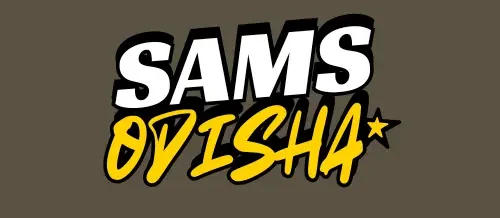Understanding the Volume of Prism A Simple Guide for Everyone
The Volume of Prism is a concept that helps us understand how much space a three-dimensional shape takes up. Every prism has a flat base, straight sides, and the same cross-section from top to bottom. Learning about the volume of prism can make solving real-life problems easier, whether you are building something, filling containers with liquid, or even just learning math at school. When we talk about the volume of prism, we are talking about measuring the space inside it. Think of a prism like a box; knowing its volume tells you how much stuff can fit inside. The shape of the base can change—triangles, rectangles, or even more complex shapes—but the idea of finding the volume stays the same.
To calculate the volume of prism, you need to know the area of the base and the height of the prism. The formula is simple: multiply the base area by the height. This works because the prism’s sides are straight, so the top and bottom shapes are identical. If the base is a rectangle, the area is length times width, and then multiplying by height gives the volume. For a triangular base, you first calculate the triangle’s area and then multiply by the prism’s height. Understanding the volume of prism is not just about numbers; it helps us see patterns and relationships between shapes. By practicing, students, engineers, and hobbyists alike can become comfortable with the idea and apply it in everyday life. From packing boxes to designing swimming pools, from creating art sculptures to measuring soil in a garden, the volume of prism is everywhere. It is a fundamental concept in geometry, yet it is easy to understand if we break it into small steps.
Volume of Prism Made Easy: Step-by-Step Guide for Beginners
Learning the volume of prism can be fun and easy if you follow a step-by-step approach. First, look at the base shape of the prism, which can be a rectangle, triangle, or any other flat shape. Next, measure the height of the prism from the base to the top. To find the volume, calculate the area of the base and then multiply it by the height. This gives you the total space inside the prism. By practicing with different base shapes, you will understand how the formula works and how changing the base or height changes the volume. Step-by-step learning helps beginners grasp the concept quickly and apply it in real life.
How to Calculate the Volume of Prism in Real Life
Calculating the volume of prism in real life is simple when you know what to measure. For example, if you have a prism-shaped box or container, measure its base and height first. Then use the formula: base area multiplied by height. This helps you know how much it can hold, like water, sand, or toys. Understanding the volume of prism is useful for many tasks, such as packing, building, or even gardening. Practicing with real objects makes learning more interesting. By measuring actual prisms, students and kids can see the formula work in real life and develop a better understanding of space, volume, and dimensions in a practical and fun way.
Mastering the Volume of Prism: Simple Tips for Students
Students can master the volume of prism with some simple tips and tricks. Start by remembering that the volume is always base area times height. Use a ruler to measure carefully and write down the numbers. Draw the prism on paper to visualize it, which makes it easier to understand. Practice with different shapes like triangles, rectangles, and hexagons. Check your answers by comparing with real objects, such as boxes or tanks. Using these tips regularly helps students gain confidence and avoid mistakes. Learning the volume of prism becomes much easier when you see the pattern and practice step by step, making math enjoyable and understandable.
Volume of Prism Explained in Easy Words for Kids
The volume of prism is just how much space is inside a shape that has straight sides and a flat base. Think of a prism like a juice box, a chocolate bar, or a toy block. To know its volume, measure the base and the height, then multiply them. The answer tells you how much space is inside the prism. Kids can use blocks or boxes at home to practice and understand better. By trying different prism shapes, like rectangles and triangles, children can see how the volume changes. Learning with easy examples makes math fun, helps kids think logically, and shows them how shapes and space work in real life.
Everything You Need to Know About the Volume of Prism
The volume of prism is an important math concept that helps you understand space and measurements. It tells you how much a prism-shaped object can hold inside. To find it, measure the base area and multiply by the height. Different prisms have different base shapes, so the base area may be a rectangle, triangle, or other shape. Knowing this helps in school, in building things, and even in cooking or packing. Understanding the volume of prism teaches you about dimensions and space. By practicing with real-life examples and simple calculations, anyone can learn the concept quickly. It is a useful and practical skill for both students and adults.
Volume of Prism: Practical Examples You Can Try at Home
You can practice calculating the volume of prism at home with simple objects. Use a rectangular box, a triangular prism-shaped toy, or even a juice carton. Measure the base and height, then multiply to find the volume. You can fill it with water, sand, or small objects to see if your calculation is correct. Practicing with real examples helps you understand the concept better than just reading from a book. By trying different shapes and sizes, you will notice how changing the base or height changes the volume. These fun experiments make learning math exciting and help you see how formulas work in the real world.
Quick Tricks to Learn the Volume of Prism Easily
There are some quick tricks to remember the volume of prism formula. Always start with the base area and multiply by height. Use simple shapes first, like rectangles, to practice, then move to triangles or hexagons. Drawing the prism helps you visualize the space inside. Check your units carefully, whether it is centimeters, meters, or inches. Using real-life objects, like boxes or blocks, helps reinforce the concept. By practicing these tricks, you can quickly calculate the volume without mistakes. Learning becomes faster and more enjoyable, and soon calculating the volume of prism will feel like second nature.
Understanding the Volume of Prism: A Complete Beginner’s Guide
This complete beginner’s guide explains everything you need about the volume of prism. Start by identifying the base shape, measure its area, and multiply by the height. Visualizing the prism makes it easier to understand how the space is calculated. Practice with simple objects at home, like boxes or toy prisms, to see the formula in action. Learn with different base shapes to understand how each affects the volume. Step-by-step guidance, real-life examples, and regular practice make mastering this concept easy. With this guide, beginners can feel confident about solving volume problems and applying the knowledge in everyday situations, school projects, or simple DIY tasks at home.
Conclusion
Understanding the volume of prism is very helpful in daily life. When we know the volume, we can measure how much space is inside boxes, tanks, or containers. This is useful for packing things, filling water, or even cooking. Learning volume helps children think logically and see how math works in real life. By practicing with different prism shapes, like rectangles and triangles, anyone can become confident in calculating volumes.
The first step is always to identify the base of the prism. The base can be simple, like a rectangle, or a bit tricky, like a triangle. Measure the base area carefully using a ruler. Then, measure the height of the prism. Multiply the base area by the height, and you have the volume. Practicing this step repeatedly helps you remember it forever.
FAQs
Q1: What is a prism?
A prism is a 3D shape with two identical flat bases and straight sides connecting them.
Q2: How do I find the volume of a prism?
Multiply the area of the base by the height of the prism.
Q3: Can a prism have a triangular base?
Yes, prisms can have triangular, rectangular, or even other shaped bases.






